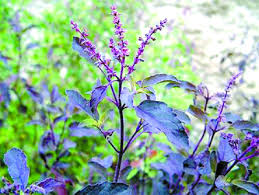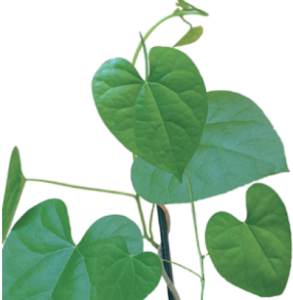The “It depends” Rule
A big, “it depends” rule in Ayurveda and “Terrain” medicine makes teaming up with an advanced practitioner, or learning advanced use of herbs especially important for mothers with complications. The same thing is true for all of us as we move through the seasons of our lives.  An herb may be right for a particular condition in spring, yet not suit us in winter. It may be right for a woman in her menopause years, but ill-advised for postpartum hormonal imbalances. Even the benefic Holy Basil has its limits. Being a heating herb, some pittas can’t handle much of it. I am inspired today to talk about choices in the springtime.
An herb may be right for a particular condition in spring, yet not suit us in winter. It may be right for a woman in her menopause years, but ill-advised for postpartum hormonal imbalances. Even the benefic Holy Basil has its limits. Being a heating herb, some pittas can’t handle much of it. I am inspired today to talk about choices in the springtime.
Manas Herbs
Help for mind and mood
Manas means mind in Sanskrit. Ayurveda’s use of liver and blood supportive herbs in this season help to balance the mind by giving clarity to channels and tissues that affect the mind. Liver herbs can even help build neuro-transmitters, cleanse receptor sites for them, and build ojas, the quintessential finest product of digestion and source of immune strength. Tulsi, or Holy Basil (the purple variety is pictured above) is a manas (mind and mood supportive) herb which suits the Spring season more than most. It is different from most manas herbs, which are often heavier to digest, more tonic and less clarifying, and therefore better for summer or winter use. Instead, tulsi is lighter and somewhat heating, so it helps to clear spring allergies as a respiratory-specific herb, fights cough, cold, flu, bacteria, fungi and parasites–gently but with power–and is ama (toxin) reducing. Like the other basils, Tulsi not only supports milk production, but also increases body warmth without harsh heat, and improves digestion – all of these postpartum needs. Because it is slightly bitter, tulsi should not be used during pregnancy, unless it is used very carefully.  Tulsi is anti-stress, and an adaptogen with special serotonin enhancing and sattvic gifts for mama and baby — qualities which naturally improve the mood and sense of well-being. Tulsi is less heavy to digest than many of the manas herbs, which makes it more helpful when kapha is high in the early springtime. The herb part used is usually the leaf. White or black tulsi beads are often worn to strengthen devotion and sattva as well.
Tulsi is anti-stress, and an adaptogen with special serotonin enhancing and sattvic gifts for mama and baby — qualities which naturally improve the mood and sense of well-being. Tulsi is less heavy to digest than many of the manas herbs, which makes it more helpful when kapha is high in the early springtime. The herb part used is usually the leaf. White or black tulsi beads are often worn to strengthen devotion and sattva as well.  Personified in Vedic tradition, Tulsi has a very benefic feminine energy and is thought to have divine powers which provide spiritual protection. Whenever you take a herb that is rich in divine intelligence, like tulsi, it can help to remove vibrational blocks in your system and strengthen your auric field. Mothers and newborns are in a state of tremendous openness, physically and energetically. Often they have been around negative energies or hospital environments where – many things go on and can create complications on this level too. It is important to protect them at this time, and Tulsi can be a lovely friend indeed. During kapha season look to safe postpartum blood and liver cleansing herbs. Choose ones whose impact on vata is not going to create more vata. Remember that in a new mom, vata is already pushing the other existing doshic and mental issues out of balance and you don’t want add to it by recommending an inappropriate herbal combination. Appropriate herbs may include guduchi, bringaraj, anantamool, and turmeric, with warming balance from such herbs as pippali or ginger.
Personified in Vedic tradition, Tulsi has a very benefic feminine energy and is thought to have divine powers which provide spiritual protection. Whenever you take a herb that is rich in divine intelligence, like tulsi, it can help to remove vibrational blocks in your system and strengthen your auric field. Mothers and newborns are in a state of tremendous openness, physically and energetically. Often they have been around negative energies or hospital environments where – many things go on and can create complications on this level too. It is important to protect them at this time, and Tulsi can be a lovely friend indeed. During kapha season look to safe postpartum blood and liver cleansing herbs. Choose ones whose impact on vata is not going to create more vata. Remember that in a new mom, vata is already pushing the other existing doshic and mental issues out of balance and you don’t want add to it by recommending an inappropriate herbal combination. Appropriate herbs may include guduchi, bringaraj, anantamool, and turmeric, with warming balance from such herbs as pippali or ginger.
Mamas’ Postpartum Herbs
Choose safe herbs for the “season”
It is kapha season in the northern hemisphere, and both mind and respiratory system are more easily mushy. Allergies and mucous are more common. After giving birth, our minds are naturally mushy anyway. Astrologically, the planet governing mind – Mercury – goes into an influence of “debilitation” each spring. The time frame is today until April 20th! No wonder it has taken me so long to write this.
Spring brings many joys, the earth moves, and water flows…
Just like snow melting and sap starting to flow externally, new growth is facilitated in Spring. But slush is messy, and pollen season troubles many. Kapha is earth and water, and earth is moved by water, fire (sun) and air (wind) elements. Things come out and grow in the sun, and also have to deal with water’s runny nature. Internally, ama (accumulated impurities and excesses in the body) also starts to melt. As the water flows in our body, excess kapha easily shows up as more mucous if the channels are not clear. The mind gets mushier too. It’s natural, because the channels in our mind and body got restricted during winter’s cold. Heat helps to thaw accumuluated kapha and also relax the channels and increase the flow, but herbal and dietary attentions often are needed to help loosen and eliminate these accumulations.
Choosing herbs
The needs of kapha are different in springtime than in the winter or summer, and require more pungent, bitter and astringent tastes. For many this is a time of spring cleansing, and purification, when lightness and warmth is called for. As always when choosing herbs, keep in mind the constitution of the person, her condition and needs, and even the planetary influences she may be facing. For example, choosing herbs to heal a “debilitating” planetary influence is different from strengthening a “weak” planet. Sometimes a person may need a palliative approach during Spring, which combines the cleansing qualities of anti-kapha herbs, the nourishing and tonic qualities of anti-vata herbs, and the cooling qualities of anti-pitta herbs. A new mom and her family, may be best supported by bringing the mind back to sattva (peace/harmony) by supporting healthy sadhaka pitta (neurotransmitters) and its mind-heart connection, while calming the high vata in her body and the eliminating the excess kapha brought on by seasonal changes.
Cleansing as a risky concept for postpartum
Even though the maternal body has cleansing to do, most cleansing therapies and herbs generally create depletion. In particular, pungent and bitter herbs are cleansing , and after childbirth, depletion therapy becomes a risky approach. Ojas supportive Guduchi (pictured above) is at the top of my list, along with Tulsi. Guduchi, gently but powerfully helps detox from allopathic medicines and is generally good for all three doshas (tridoshic) with pitta reducing qualities. Holy Basil or Tulsi, is healing, purifying, and gently cleansing. Goksuradi Guggulu also stands out for postpartum use, with its deep cleansing effects on the water element. The pungent herbs used in Panchakola * Ghee, used regularly in early postpartum, are all deepan and pachan – strengthening digestive and metabolic fires and burning toxins. This herbalized ghee will usually be better than plain ghee for mamas at this time, and is well alternated with sesame oil in food.
Life and Learning in Layers
Being able to apply Ayurvedic wisdom to a specific situation is important. This is a skill learned in layers. This includes understanding many explainable and unexplained, but identifiable properties of foods and herbs. It also includes how they are administered. Many factors change the value of an herb, including for whom, in what format, and in what season or phase of life it is used.
The Season of Growth
Just like in springtime when everything comes alive and grows so fast, mothers as well as babies need building therapy as an underlying modus operandus! Mom needs to be strong and abundant for baby. And she does have special cleansing needs. Mama and baby need gentle but effective bitter and pungent tastes, yet less of the astringent and bitter, while gaining needed benefits. All three tastes increase air element, dryness, and they may warm or cool but all tend to be catabolic (depleting), not anabolic (building). In conditions of higher kapha – damp cool or warm – and in climate, season or bodily condition (prakruti and vikruti), choose herbs and foods which are less heavy and clogging, whether plant or animal based. This means, even though the general postpartum rules still apply of more fats, milk, sweet, carb, digestible, sattvic and building influences, always practice discernment. Ayurveda identifies which of these are best used for foods, when, and how to prepare them. It identifies which are the best delivery methods for best results and preventing complications. Understanding the specific properties helps us chose effectively. By example, in this season we can lean more on sesame oil and use less ghee. In hot milk tonics, cook turmeric, or anantamool into the recipe and include black pepper. In sweets, favor more spices in hot stewed fruits, adding apple after first 2 weeks. Put extra black pepper and ginger into the mother’s halva (Sheero) or spice puddings with extra ginger, cinnamon and bay leaf. All of these tips give the cook a palette and inspiration to work with, but also listen to what you are sensing, feeling, and knowing, instead of working just by recipe. There are general principles which serve all mamas. Layer into this the skills of a more advanced practitioner when needed, to assess and choose for special needs. Speaking of needs! For so many mothers, babies and families, these skills are deeply needed. Will you join us in this work? Here are two this weekend!
